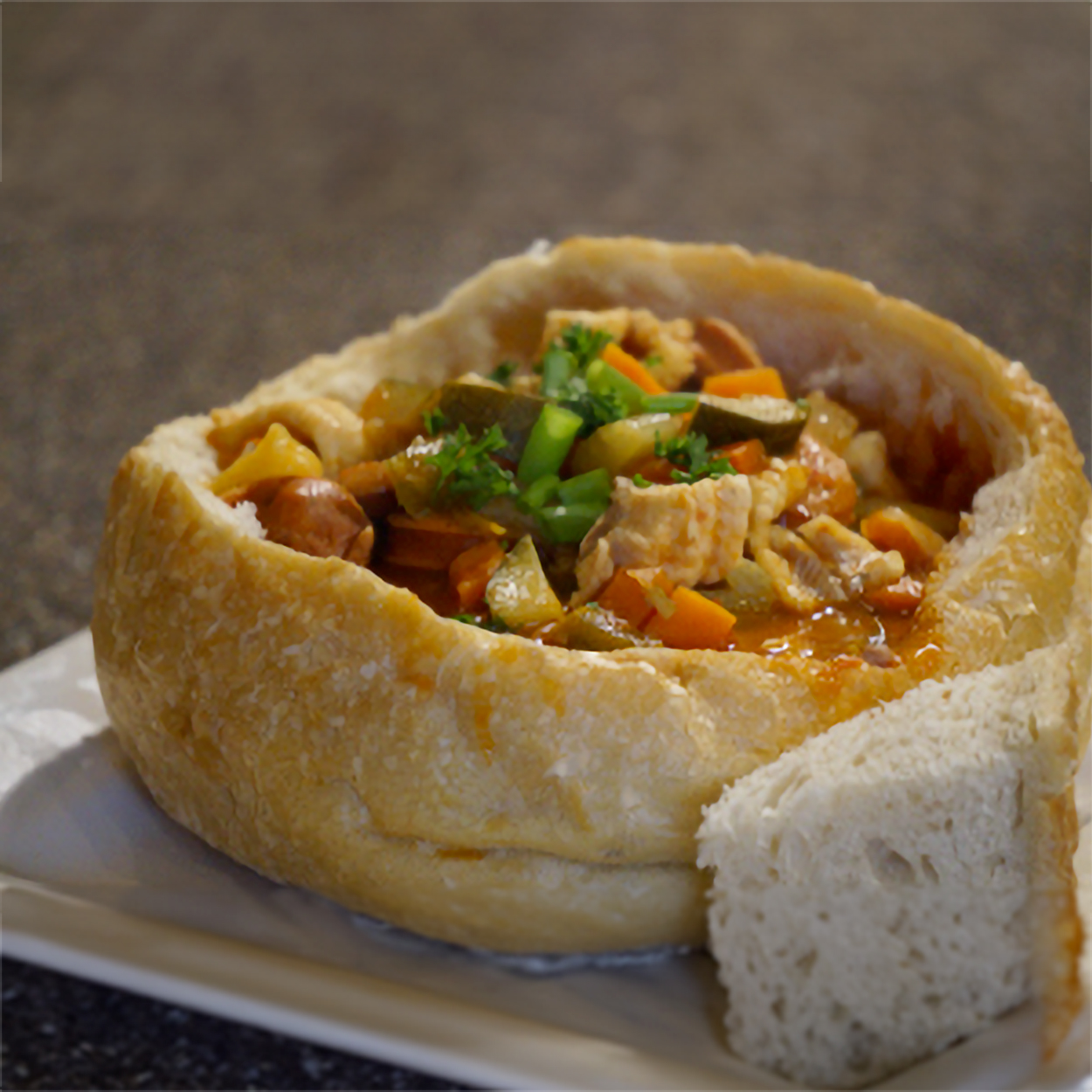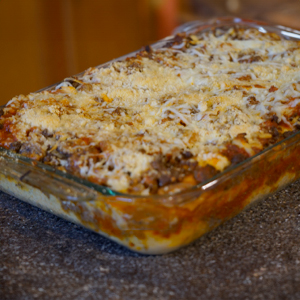DUMP CAKE
1 box yellow cake mix
32 ounce can diced pineapple
8 ounce can sliced pineapple
maraschino cherries
4 sticks margarine
In a 9x12 glass baking dish, pour in diced pineapples with juices. Add sliced pineapples arranging in a single layer at bottom of dish. arrange maraschino cherries in the center of each pineapple slice. Dump cake mix over pineapple but do not mix; smooth cake mix evenly over pineapple. Cut all sticks of margarine into equal thin pats. Completely cover top of cake mix with margarine pats. Bake cake at 350 degrees for one hour or until browned. Brown or granulated sugar can be added over margarine pats for added flavor.
This recipe for "Blueberry Galette," courtesy of the U.S. Highbush Blueberry Council, is a delicious treat that's perfect for entertaining.
Blueberries should be a delicious part of people's daily diets because this flavorful fruit packs a nutritious punch. Blueberries are a great source of antioxidants, which can help the body fend off various illnesses.
Native to North America, blueberries are available fresh, frozen and canned and are used in a variety of recipes. Plus, they're right at home whether one is serving breakfast, dinner or dessert. However, many people feel that blueberries are best eaten as pie filling.
Various pastries showcase blueberries, including the French galette. A galette is not a pie, but more of a freeform crusty cake. However, it is similar to pie, making it a welcome alternative to that popular pastry. This recipe for "Blueberry Galette," courtesy of the U.S. Highbush Blueberry Council, is a delicious treat that's perfect for entertaining.
Blueberry Galette
8 portions
Crust
3 cups unbleached all-purpose flour
11/2 teaspoons salt
2 tablespoons sugar
4 ounces lard or shortening, cut into 1/2-inch pieces and frozen
1 cup unsalted butter, cut into 1/2-inch pieces and refrigerated
1/2 cup ice water
1 teaspoon vodka
Filling
8 cups fresh or frozen blueberries
3/4 cup sugar, plus 2 tablespoons, separated
31/2 tablespoons cornstarch
1/4 teaspoon salt
1 lemon, zested
1 tablespoon lemon juice
1 egg
1 tablespoon water
Crust
1. Combine the flour, salt and sugar in a food processor. Add the butter and lard.
2. Use the food processor to work the butter and lard into the flour by pulsing it until the butter is in pea-sized pieces.
3. Whisk the water and vodka together and add it to the flour/butter mixture a few tablespoons at a time. It will start to look shaggy, but not dry. It should hold together when you squeeze it in your hand.
4. Gently press the dough into a ball using a pastry scraper or your hands. Divide the dough into two pieces and create round disks. Wrap the dough in plastic and refrigerate for at least an hour, or overnight.
Filling
1. In a small bowl, combine 3/4 cup sugar, cornstarch, salt, and lemon zest. Massage the zest into the sugar.
2. In a large bowl, toss together the blueberries and lemon juice. Add the sugar/lemon zest mixture and gently stir to coat the blueberries.
3. Line a baking sheet with parchment paper. On a floured surface, roll out the chilled pie dough into a 1/8-inch-thick-circle. Dust off any extra flour and lay crust onto the prepared pan.
4. Mound the blueberry filling in the middle of crust. Fold and crimp the dough up so that it covers at least 2 inches of the filling. Freeze the shaped galette for at least 15 minutes to chill the dough.
5. Preheat the oven to 425 F and set rack in middle of the oven.
6. Just before baking, beat the egg and water together and brush the edges with egg wash. Sprinkle crust with the remaining 2 tablespoons of sugar.
7. Bake for 30 minutes, then turn the oven down to 350 F and bake for an additional 30 minutes.
This recipe yields two 12-inch galette crusts. Extra dough can be stored in an airtight container for up to one month.

Many salt substitutes can impart flavor without adversely affecting your overall health.
The human body needs salt to survive. Sodium chloride is required in a nominal amount to conduct nerve impulses, contract and relax muscles, and maintain a proper balance of water and minerals. The Harvard T.H. Chan School of Public Health says it's estimated people need 500 mg of sodium per day to perform these vital functions. Too often, however, people consume much more salt in their diets than is necessary, which can lead to a host of medical issues. The average person eats 3,400 mg of sodium daily, and that can contribute to high blood pressure, heart disease, and even loss of calcium in bones.
Salt is already added to many prepared foods as a preservative and flavor enhancer, so it's not necessary to add salt to these meals. However, when cooking from scratch at home and flavoring foods, it may be tempting to reach for the salt because of the way it can enhance flavor. Fortunately, there are many salt substitutes that can impart flavor without adversely affecting your overall health.
Potassium chloride: Potassium chloride can provide a salty flavor without all of the sodium that is in regular table salt, which is sodium chloride. Potassium chloride typically is mixed with a ratio of sodium chloride in "light" or "low-sodium" salt options and salt substitute products. It can slash sodium by up to 50 percent in some instances, says Consumer Reports.
Acid: Food scientist and blogger Nik Sharma says that people can cut down on salt in recipes if they increase the acid. This includes lemon juice or vinegar added at the end of the cooking process. It can replicate that bite that salt often provides.
Sea ingredients: Kelp, alternative seaweeds or pureed anchovies can impart a salty flavor without the added sodium. While sea water creatures may taste salty, they do not transfer the same amount of sodium to the body as regular salt. These ingredients add the "umami" flavor profile, also known as the "fifth taste."
Garlic: Pungent and strong, this spice can boost flavor easily without increasing the need for sodium. Double the amount of garlic in recipes when cutting out salt.
Black pepper: Similarly, Healthline suggests reaching for black pepper to spice up foods over salt. Black pepper is a good addition to savory dishes, and can help decrease inflammation in the body.
MSG: Monosodium glutamate contains two-thirds less sodium than table salt, so adding a little can increase the flavor of foods, says Taylor Wallace, Ph.D., an adjunct professor of food and nutrition studies at George Mason University.
Nutritional yeast: Nutritional yeast offers a nutty, salty, cheesy flavor, and is a popular choice among vegans who want to get a parmesan cheese taste without actually consuming dairy. The yeast adds flavor and is often fortified with B vitamins, making it a healthy addition to diets.
Ginger: Ginger can be peppery and bold in dishes, and it works well in both sweet and savory foods.
Liquid aminos: This is a liquid seasoning made by treating soybeans with an acidic solution to break them into amino acids, says Consumer Reports. It also can be made from fermenting coconut sap with water. The result is another umami flavoring. And though there is still sodium content, it is less than table salt.
Smoked paprika: The smoky, spicy taste of this paprika may make it easy to skip the salt in some foods.
Salt is necessary in small amounts, but too often people consume it to excess. Small changes can help individuals reduce their sodium intake.
SalemLeader.com
Leader Publishing Company of Salem, Inc.
P.O. Box 506
117-119 East Walnut Street
Salem, Indiana. 47167
Phone: 812-883-3281 | Fax: 812-883-4446
Business Hours:
Mondays through Fridays, 9:00am - 5:00pm
News:
news@salemleader.com
Office:
office@salemleader.com
Publisher:
publisher@salemleader.com
Business
- More Business News
- Go To Guide
- Business Directory
- Auctions
Education
- More Education News
Opinion
- Editorials
- Letters to the Editor
- Columns
- Unsung Heroes
- Days Gone By
- In the Garden
- Guest Columns
- Reader's Poll
- Salem Leader Forum
- Questions and Answers
Church
- Bible Aerobics
- Church News
- Church Directory



